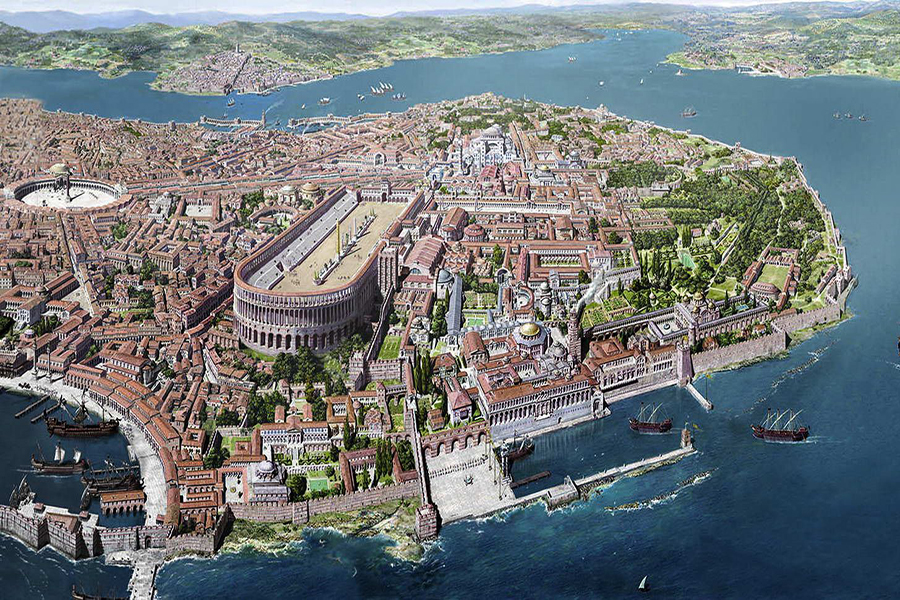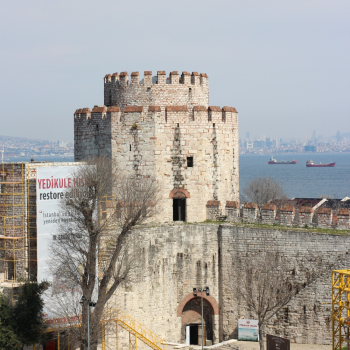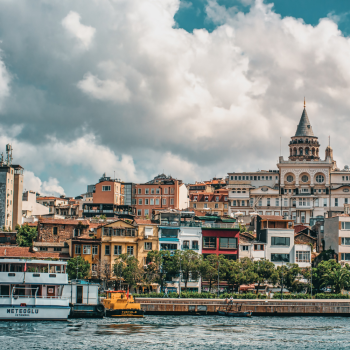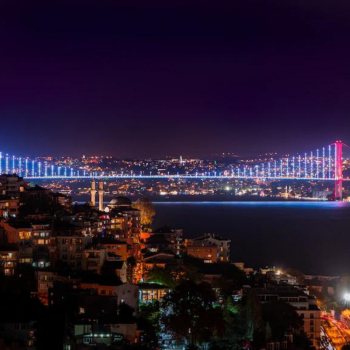Istanbul was founded in the 7th century BC on a naturally defensive site from which trade along the Bosphorus could be controlled. For 16 centuries it was a great imperial capital, first of the Byzantine Empire and then of the Ottoman Sultans. Some know-ledge of the histories of these two civilizations helps the visitor to appreciate the magnificent monuments found through out the city.
The topography of Istanbul was formed at the end of the last Ice Age, when meltwaters created the Bosphorus. The Stone Age cultures in the area were replaced by Copper Age villages and walled Bronze Age towns
The Bosphorus was an important trade route inthe ancient world along which ships carried wine and olive oil north from the Mediterranean and grain, skins, wool, timber, wax, honey, salted meat and salted fish south from regions around the Black Sea. The area around the Bosphorus was subjugated by a series of peoples, starting with the Mycenaeans (1400– 1200 BC). Between 800 and 680 BCthe region was controlled by thekingdom of Phrygia. Later, in 676 BC, Greek expeditionaries founded thecity of Chalcedon (on the site where modern Kadıköy now stands)
.
THE FOUNDATION OF BYZANTION
The foundation of Istanbul is usuallydated to 667 BC when, according tolegend, a Greek colonist, Byzas, led an expedition from the over crowded citiesof Athens and Megara to estab-lish a colony on the Europeanside of the Bosphorus. This colony, known as Byzantion, grew to be a successful independent city-state, or polis , one of the 40 most important such statesthrough-out the Ancient Greek world. Duringthe next few centuries,Byzantion worked inpartnership with Chal-cedon, using the samecoinage and sharing thetolls exacted from passing sea trade. But Byzantion had to struggle to maintain its independence in the mercurial politics of the ancient world. It endured Lydian (560–546 BC),Persian (546–478 BC), Athenian(478–411 BC) and Macedonian (334– 281 BC) rule before briefly regaining its autonomy. In 64 BC it was sub-sumed into the Roman Empire as Byzantium. The city was almost destroyed in AD 195 by Septimius Severus because of its support for his rival for the imperial throne, Pescennius Niger. It survived theGoths’ devastation of Chalcedon in AD258 but trade in the region dramati-cally declined in the following years.
Septimius Severus, who devastated the city in the 2nd century ADc.676 BC
Chalcedon, a Greek settlement, foundedon Asian shore 340 BC Philip IIof Macedoniaun successfully be sieges city 600 BC .667 BC Byzantionreputedly founded by Greek colonists from Athens and Megara,led by Byzas 334 BC Alexander the Great crosses the Hellespont (Dardanelles) and conquers Anatolia
200 BC 64 BC Pompey brings Byzantion into the Roman Empire, renaming it Byzantium
AD 258 Goths destroy Chalcedon Alexander the Great
AD 1AD 200 AD 195 Roman EmperorS
Below are our group and private tours or art activities that may interest you.







